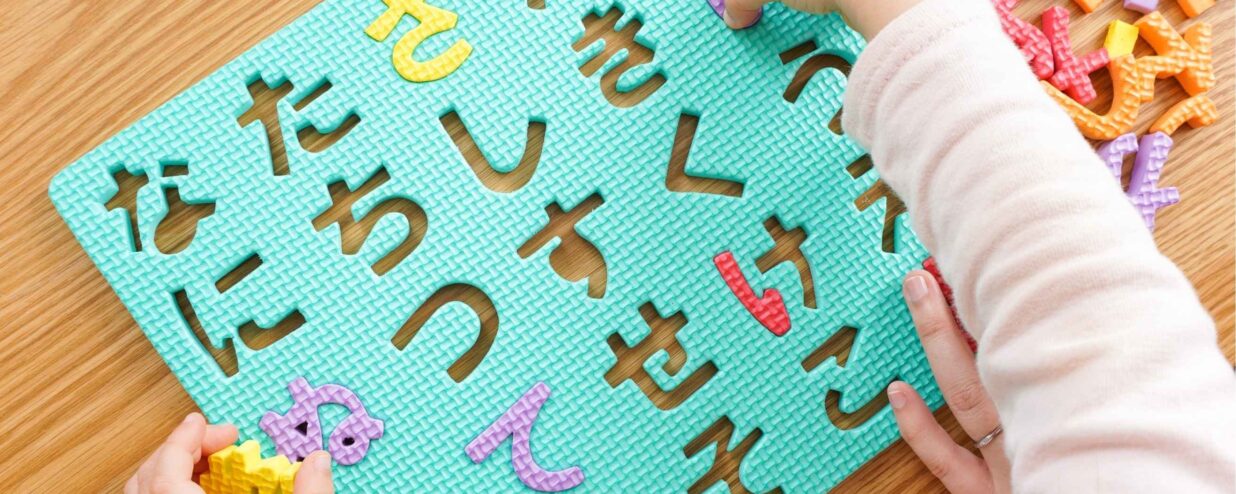Want to learn Japanese hiragana? In this blog, we share our own PDF learning Hiragana practice sheets and links to some popular apps for learning Japanese. Just started learning Japanese? Head to our main article about the Japanese writing system for a more comprehensive guide!
Apps for Learning Hiragana
If you are just getting started with learning Hiragana, you may think that it is easier to learn with an App.
Apps are convenient and easy to take with you to practice using while you are out and about. However, we also suggest that you take some time to physically write the characters, as it will cement them in your brain.
That being said, we recommend several apps for being fun and easy to use.
Learn Hiragana & Katakana with Dr. Moku
Dr. Moku’s Hiragana and Katakana Mnemonics are 2 separate apps. One for Hiragana and one for Katakana. In each app, they associate all the kana with pictures, making it easy for you to remember them.
It also uses mnemonic hacks (tying each character to a visual story-based meaning) rather than just rote memorization.
Mindsnacks – Limited Free Version
Mindsnacks has a visually appealing interface, and the limited free version allows you to practice learning Hiragana and Katakana characters.
It is the closest thing to a learning video game that we have found.
Hiragana Learning Chart – Writing Practice PDFs
If you are looking for a more analog way to practice and learn hiragana – we have included a sample of a few of the practice homework sheets from our Japanese Crash Course below:
Open the image in a new tab by clicking on it- you can print it!
How to use the homework sheets:
Use the hiragana chart here to locate the correct symbol. (Right-click to save as – or left-click to open)
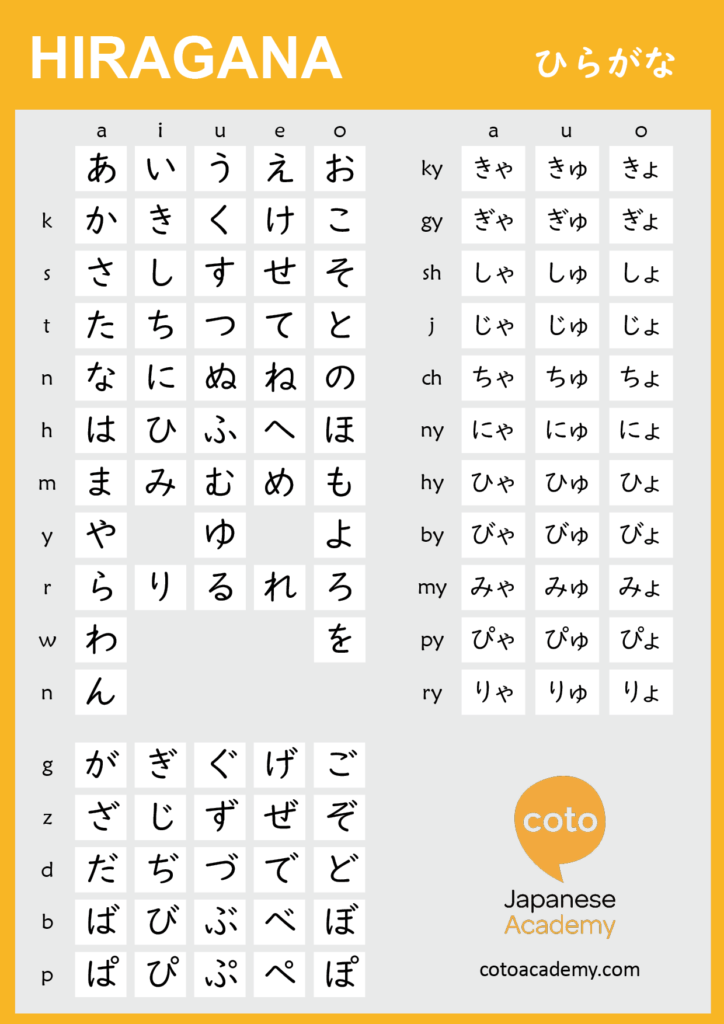
Draw a line to the corresponding character and connect them.
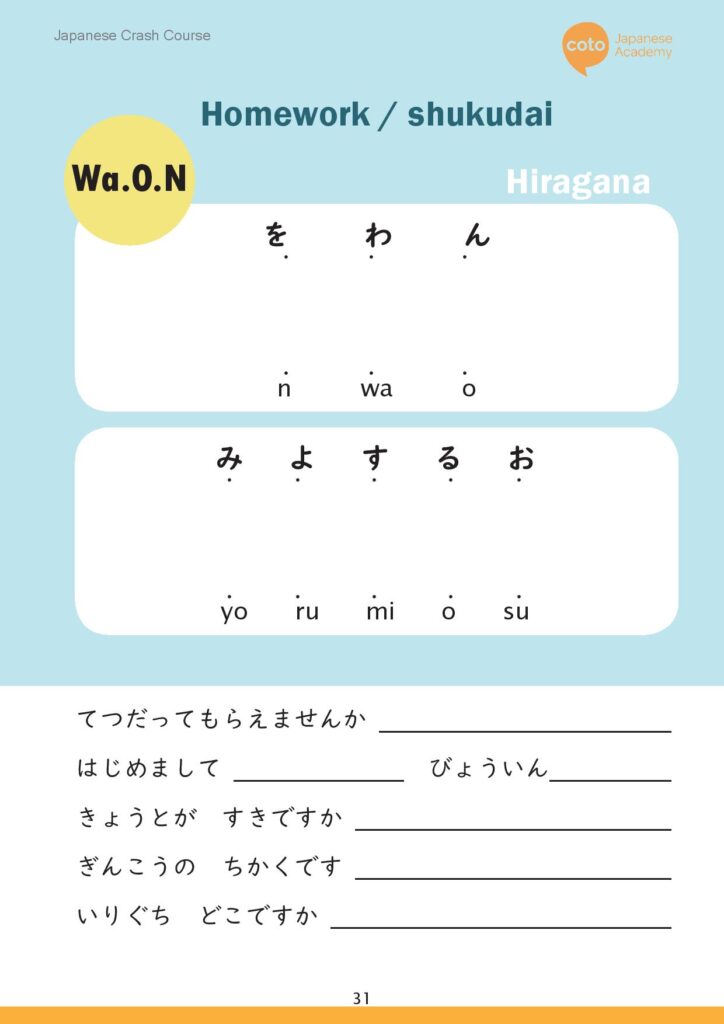
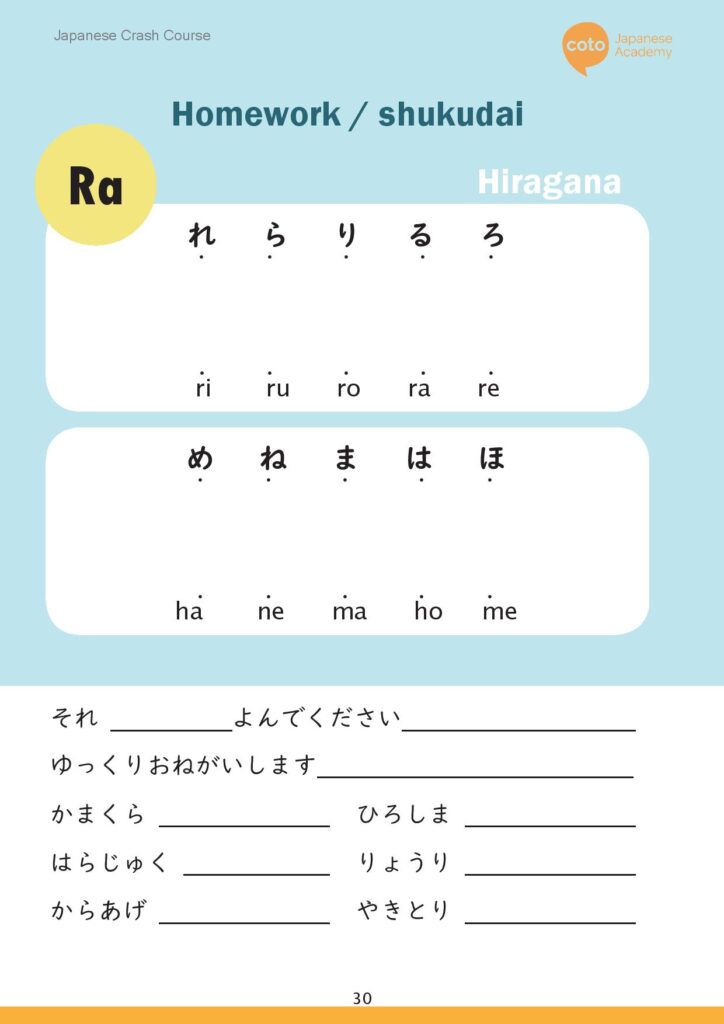
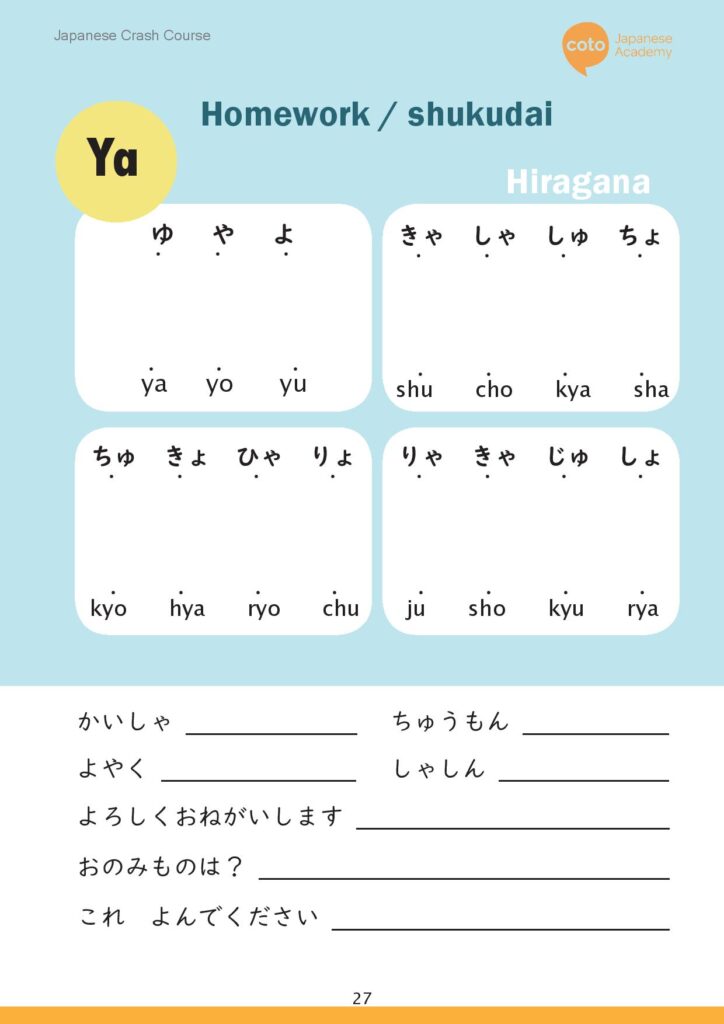

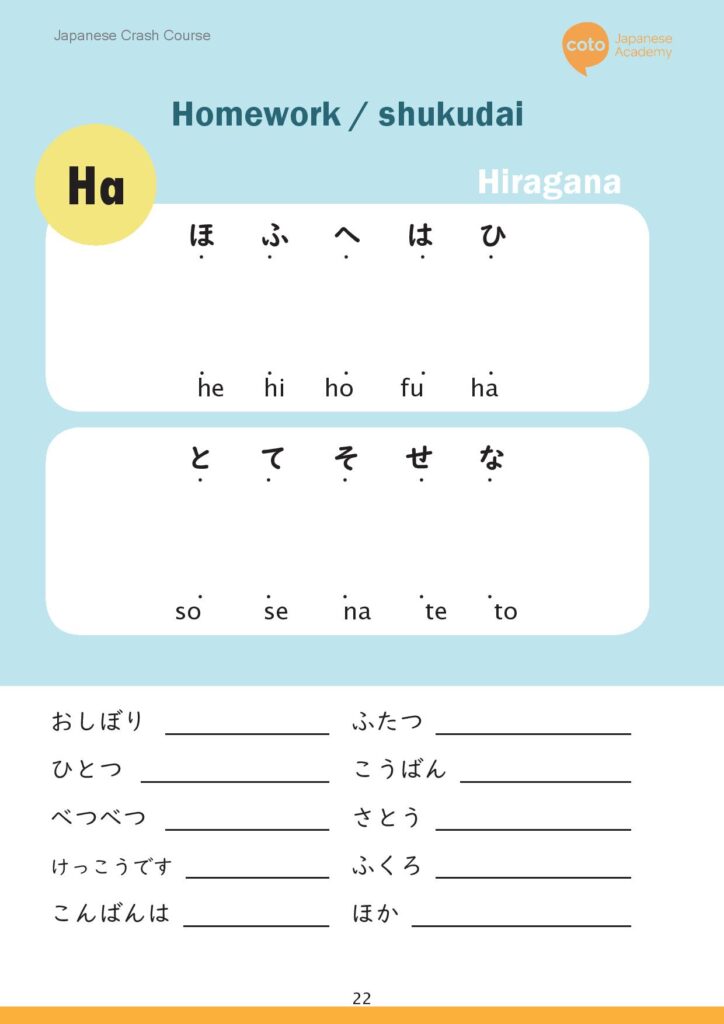
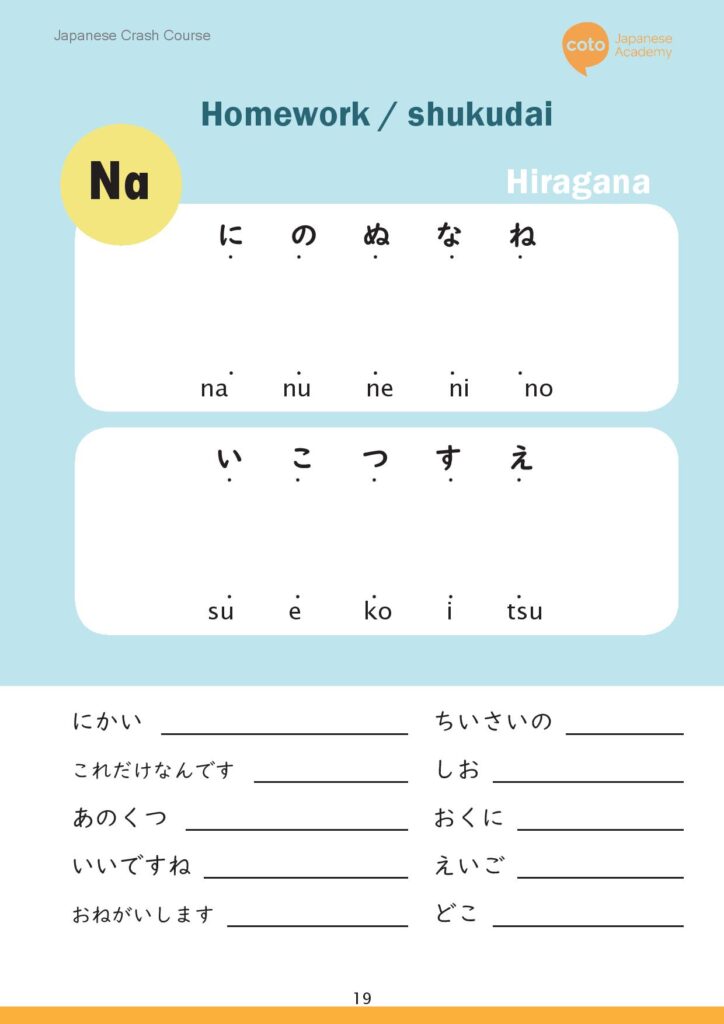
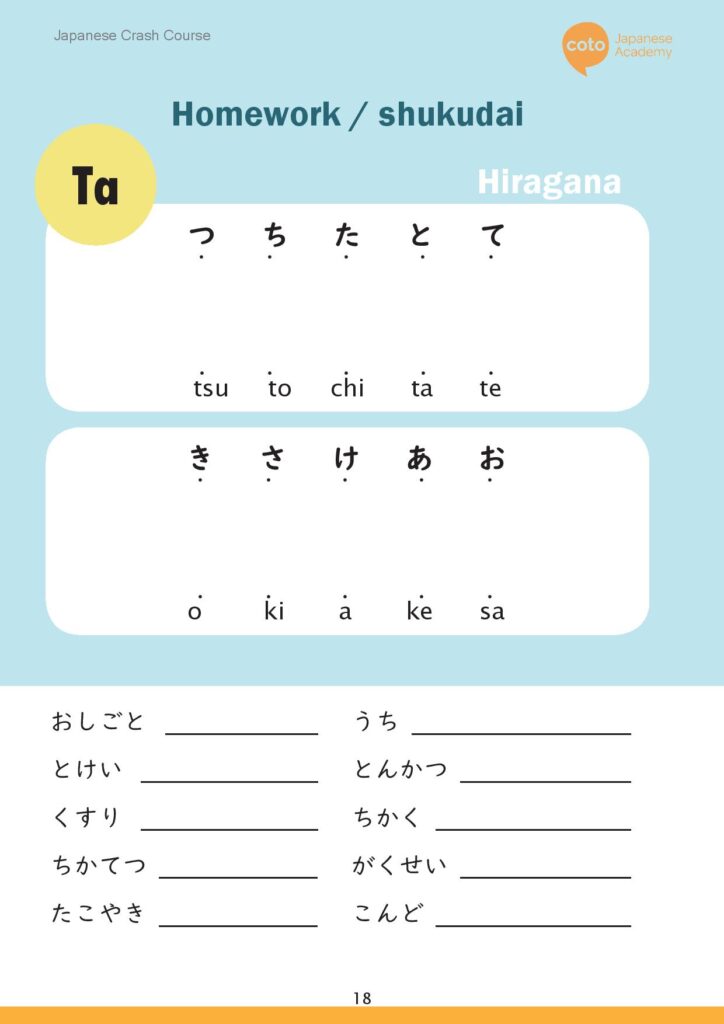
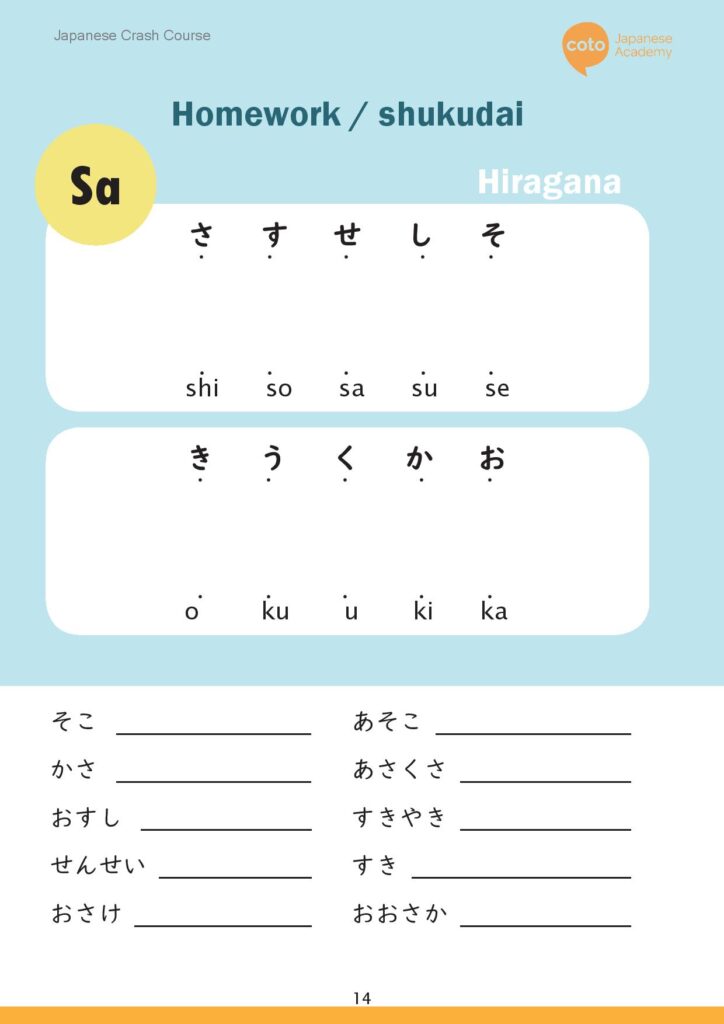
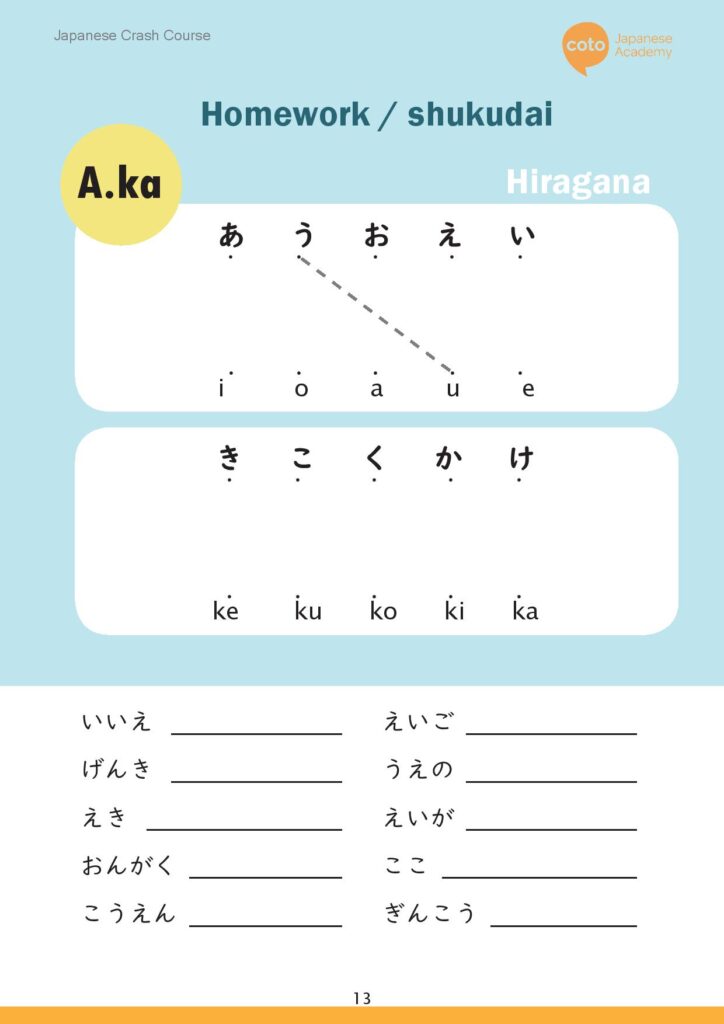
Start learning Japanese with Cot Academy!
Coto Academy offers expert-led Japanese lessons for all levels. Study in Tokyo, Yokohama, or online. Choose from part-time, intensive, or private lessons that fit your busy lifestyle. Start speaking real, practical Japanese today!
Looking for something more advanced? Check out our JLPT Kanji Workbook PDFs!
Hiragana FAQ
What is Hiragana used for?
Hiragana is a fundamental script in Japanese, used for writing sentences, grammatical particles (like は, が, を), and parts of words. It is also used for words that don’t have kanji or for furigana (small hiragana above kanji to show pronunciation).
How many Hiragana characters are there?
There are 46 basic Hiragana characters. Some characters can change their sounds when small marks (゛or ゜) are added, like か (ka) → が (ga) or は (ha) → ぱ (pa).
What’s the easiest way to learn Hiragana?
The best ways to learn Hiragana are:
- Learn mnemonics (e.g., し (shi) looks like a smiling face)
- Practice writing daily
- Use flashcards to memorize characters
- Listen to Hiragana songs or use learning apps
What’s the difference between Hiragana and Katakana?
Hiragana is mainly used for native Japanese words and grammar, while Katakana is used for foreign words (like “coffee” → コーヒー), onomatopoeia, and emphasis.
Can I write everything in Hiragana?
Yes, but it’s not ideal. Japanese writing combines Hiragana, Katakana, and Kanji, so writing everything in Hiragana can be hard to read and understand.
